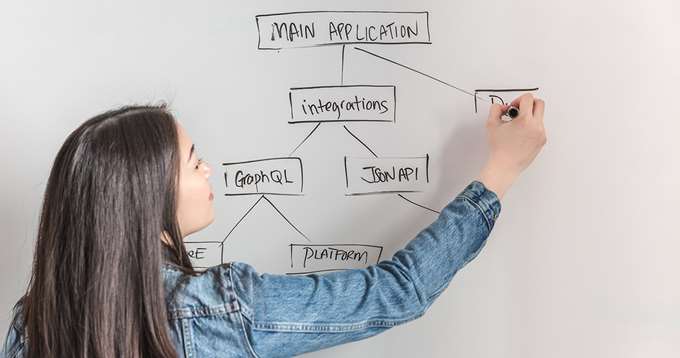Stay updated!
The best customer experience content delivered right to your inbox.
There Isn’t a One-Size-Fits-All Customer Support Platform
by UJET Team |
Contact-Center-as-a-Service (CCaaS) providers like to make big promises. Some go as far as saying they have every currently available feature and tool and will fill all your support needs.
Let’s go down the list:
- Voice
- IVR
- Web chat (desktop and mobile)
- Text (SMS/MMS)
- RCS ready
- In-app VoIP
- In-app Chat
- In-app text
- Visual IVR
- Chatbots
- Artificial intelligence
- Natural language processing
These are some of the frequently used channels that support organizations are looking for. Customer support, at the minimum, requires voice and IVR. These are still popular and useful channels designed as a catch-all. Voice is still the best channel for urgent issues that are time-sensitive and IVR is a great tool to route customers to self-service tools or guide them to an agent.
Customers expect to communicate with support through multiple channels and at their convenience. This expectation requires support teams to provide help at all times, even after business hours. For example, visual IVR and chatbots are a good solution when live agents aren’t available.
Many CCaaS providers are becoming aware of this expectation and are adding new platform features and tools to attract support organizations. Adding these attract attention, but the reality is that most aren’t fully developed. By adding these minimum viable products (MVP), CCaaS providers are able to create new packages.
Instead of offering tools for customized platforms, support teams are required to purchase toolsets, some they will never use. This is why it’s necessary to use a platform customized for your business and customers.
Mobile Communication Channels
When landlines were prominent, voice, IVR, and email were the preferred channels. Now mobile devices, specifically smartphones, have even more communication options. Text (SMS/MMS) is a popular channel because of messaging apps. Customers have become conditioned to text rather than call customer support because it’s how they communicate with friends and family.
Text messaging will eventually be augmented with Rich Communication Services (RCS), offering an improved visual text experience. More customers prefer communicating with support through text because they are able to explain issues clearly rather than relying on a voice conversation.
As companies look to increase their mobile presence to keep pace with their customers, the need for an in-app support solution will continue to grow. Depending on the industry, sharing photos, videos, and screenshots inside chats will be a necessary feature.
In-app Communication
Mobile apps allow companies to offer a variety of services to customers. Apps also allow companies to securely collect useful customer data through in-app use. But even more significant is the ability to offer customer support inside the app.
Companies implementing customer support in-app must develop these features natively during app development. Instead of adding support as an add-on, customer support should be factored into the user experience from the start
With the implementation of in-app support, agents, admins, and supervisors can leverage useful user information like account information, customer history, and any other diagnostic information that can help resolve support issues faster.
How the Customer Support Platform Should Work
Customer support platforms should offer a wide selection of tools that companies can use. But the platform should allow for feature customization. Not every customer support team uses every channel. Offering a blanket of contact channels to customers leads to higher costs and a fragmented experience.
Agents have to be knowledgeable and familiar with channels offered even when they aren’t consistently used. Companies should be focusing on the the most popular channels for their customers. These should also be the ones that make sense for the industry the company is in.
For example, a financial company should offer messaging and IVR on their website while displaying the customer support phone number. In the company’s mobile app, customers should be offered VoIP, messaging, and IVR.
This way, the customer doesn’t have to exit the app to make a call. Even more, implementing automated agents into its support means live agents can focus their time on customers with urgent issues the automated agent helps with common issues or lead them to a self-service solution.
Essentially, a company should be able to build its support platform like a house.
- Foundation: company
- Frame: support agents
- Functional: customer support platform with features and channel support
- Finishes: company branding on the web or in-app
Support platforms also need to be scalable and flexible to add new features or channels. This is like remodeling a house. You take off layers and add more functional pieces without affecting the foundation and frame.
The majority of customer support platforms all offer similar products and channels. The difference is product maturity and development for modern and future support needs. If a platform is only focused on voice through the phone, it’s forgetting about VoIP. If every message has to go through the SMS/MMS text app, the platform is ignoring RCS and in-app messaging.
Consumers expect a digital-native experience. The majority of communication of Millennials and Generation Z is through messaging whether that’s through text, messaging apps, or in-app chat.
Support for Your Customers
An off-the-shelf support platform might be useful in the beginning but as a company matures, support will have to be much more strategic. Customer support requires a lot of time and smart investments to provide the best service. Instead of casting a wide net to communicate, utilizing preferred channels can reduce costs, improve the customer experience, and help build brand loyalty.
The best customer experience content delivered right to your inbox.